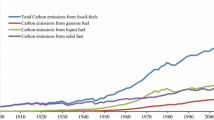Abstract
The pitch-based activated carbon fibers (ACFs) were prepared from ethylene tar-derived pitches containing nickelocene (CNi) or nickel nitrate (NiN). The effects of different anions and contents of metal salts on the microstructure and surface chemical properties of fibers were investigated. The results revealed that Ni2+ from CNi mainly remained its pristine molecule in the organometal salt-derived pitch (OP-xCNi), while Ni2+ from NiN occurred complexation reaction with polycyclic aromatic hydrocarbons (PAHs) in the inorganic metal salt-derived pitch (IP-xNiN) due to the weaker binding ability between anions and Ni2+ of CNi than CNi. The XRD and SEM results confirmed that IP-3NiN-ACF contained Ni, NiO, Ni2O3 nanoparticles with different size distributions, while OP-3CNi-ACF only contained more uniformly distributed Ni nanoparticles with small size. Furthermore, OP-3.0CNi-ACF presented higher specific surface area of 1862 m2/g and a pore volume of 1.69 cm3/g than those of IP-3.0NiN-ACF due to the formation of pore structure during the in-situ catalytic activation of different metal nanoparticles. Therefore, this work further pointed out that the desired pore structure and surface chemistry of pitch-based ACFs could be obtained through regulating and controlling the interaction of anion species, metal cations and PAHs during the synthesis of pitch precursors.
Graphical abstract









Similar content being viewed by others
References
Hassan MF, Sabri MA, Fazal H et al (2020) Recent trends in activated carbon fibers production from various precursors and applications-A comparative review. J Anal Appl Pyrol 145:104715
Suzuki M (1994) Activated carbon fiber: fundamentals and applications. Carbon 32(4):577–586
Banerjee C, Chandaliya VK, Dash PS (2021) Recent advancement in coal tar pitch-based carbon fiber precursor development and fiber manufacturing process. J Anal Appl Pyrol 158:105272
Deng Z, Hu J, Li HL (2020) Sisal xylem fibre-based activated carbon fibres for fuel adsorption: effect of thermal stabilization of diammonium phosphate. Royal Society Open Science 7(9):200966
Zhang XW, Meng YC, Fan BL et al (2019) Preparation of mesophase pitch from refined coal tar pitch using naphthalene-based mesophase pitch as nucleating agent. Fuel 243:390–397
Cao S, Yang JX, Li J et al (2019) Preparation of oxygen-rich hierarchical porous carbon for supercapacitors through the co-carbonization of pitch and biomass. Diam Relat Mater 96:118–125
Liu Y, Lu YX, Xu YS et al (2020) Pitch-derived soft carbon as stable anode material for potassium ion batteries. Adv Mater 32(17):2000505
Peng L, Chen YP, Dong H et al (2015) Removal of trace As(V) from water with the titanium dioxide/ACF composite electrode. Water Air Soil Pollut 226(7):203
Basova YV, Edie DD, Lee YS et al (2004) Effect of precursor composition on the activation of pitch-based carbon fibers. Carbon 42(3):485–495
Juan AM, Agustín BL, Ángeles LR et al (2008) NO adsorption on activated carbon fibers from iron-containing pitch. Micoporous Mesoporous Mater 108(1–3):294–302
Hong I, Jiang HC, Park YD et al (2002) Metal dispersed activated carbon fibers and their application for removal of SOx. Chem Phys Lett 366(5–6):572–577
Basova YV, Edie DD, Badheka PY (2005) The effect of precursor chemistry and preparation conditions on the formation of pore structure in metal-containing carbon fibers. Carbon 43(7):1533–1545
Wei WJ, Wang F, Yang JX et al (2021) A superior potassium-ion anode material from pitch-based activated carbon fibers with hierarchical pore structure prepared by metal catalytic activation. ACS Appl Mater Interfaces 13(5):6557–6565
Choo H, Isaacs SR, Small A et al (2007) Chemical and heating treatments of ionic monolayer-protected clusters (IMPCs) with different surface counter anions. J Colloid Interface Sci 316(1):66–71
Dai ZJ, Wang L, Ye FP et al (2014) Influence of anion species on the morphology of solvothermal synthesized LiMn0.9Fe0.1PO4. Electrochim Acta 134:13–17
Yuvaraj S, Lin FY, Chang TH et al (2003) Thermal decomposition of metal nitrates in air and hydrogen environments. J Phys Chem B 107(4):1044–1047
Laurent B, Riadh S, Claude M et al (2000) Investigation of nickelocene decomposition during chemical vapor deposition of nickel. J Electrochem Soc 147(4):1443–1448
Zhao Y, Fang F, Xiao HM et al (2015) Preparation of pore-size controllable activated carbon fibers from bamboo fibers with superior performance for xenon storage. Chem Eng J 270:528–534
Shimodaira N, Masui A (2002) Raman spectroscopic investigations of activated carbon materials. J Appl Phys 92:902–909
Edie DD, Dunham MG (1989) Melt spinning pitch-based carbon fibers. Carbon 27(5):647–655
Bahrami SH, Bajaj P, Sen K (2003) Thermal behavior of acrylonitrile carboxylic acid copolymers. J Appl Polym Sci 88(3):685–698
Jin SY, Kim MH, Jeong YG et al (2017) Effect of alkaline hydrolysis on cyclization reaction of PAN nanofibers. Mater Des 124:69–77
Peng YS, Tan RX, Liu Y et al (2021) Mesophase pitch-based carbon fibers: accelerated stabilization of pitch fibers under effective plasma irradiation-assisted modification. Materials 14(21):6382
Kruk M, Jaroniec M, Gadkaree KP (1997) Nitrogen adsorption studies of novel synthetic active carbons. J Colloid Interface Sci 192(1):250–256
Sing K (2001) The use of nitrogen adsorption for the characterisation of porous materials. Colloids Surf, A 187–189:3–9
Wang J, Ma QQ, Wang YQ et al (2018) New insights into the structure–performance relationships of mesoporous materials in analytical science. Chem Soc Rev 47(23):8766–8803
Yardim MF, Ekinci E, Bartle KD (2001) Pitch precursor-origin and chemical constitution. Nato Sci Series E: Appl Sci 374:125–134
Acknowledgements
This research is funded by the National Natural Science Foundation for Young Scientists of China (Grant No. 51702094) and the Natural Science Foundation of Hunan Province, China (Grant No. 2020JJ4203 and 2019JJ50651).
Author information
Authors and Affiliations
Corresponding author
Ethics declarations
Conflict of interest
The authors declare that they have no conflict of interest.
Additional information
Publisher's Note
Springer Nature remains neutral with regard to jurisdictional claims in published maps and institutional affiliations.
Rights and permissions
About this article
Cite this article
Gou, G., Wei, W., Yang, J. et al. Effect of anion species on preparation and properties of pitch-based activated carbon fibers by in-situ catalytic activation of metal nanoparticles. Carbon Lett. 32, 1507–1518 (2022). https://doi.org/10.1007/s42823-022-00375-1
Received:
Revised:
Accepted:
Published:
Issue Date:
DOI: https://doi.org/10.1007/s42823-022-00375-1




